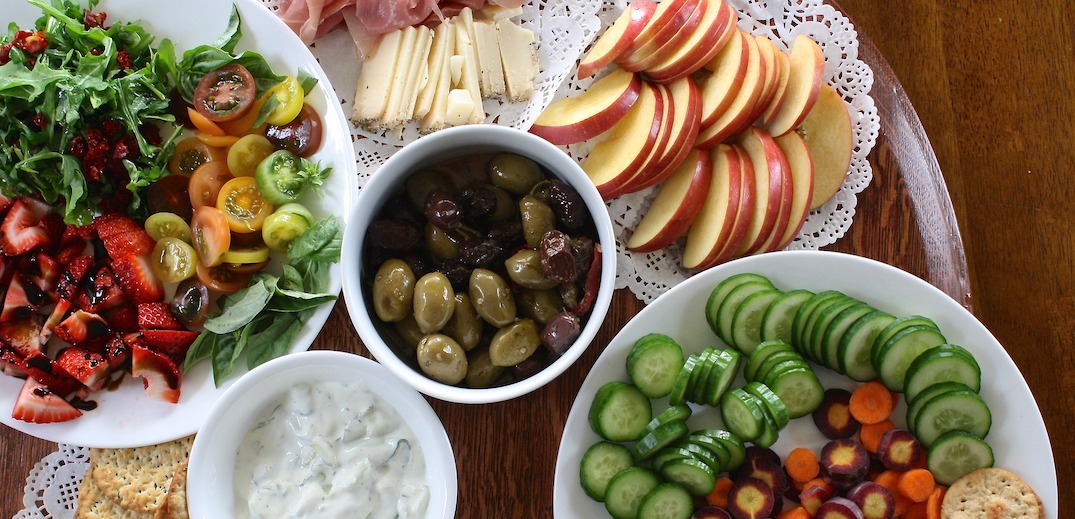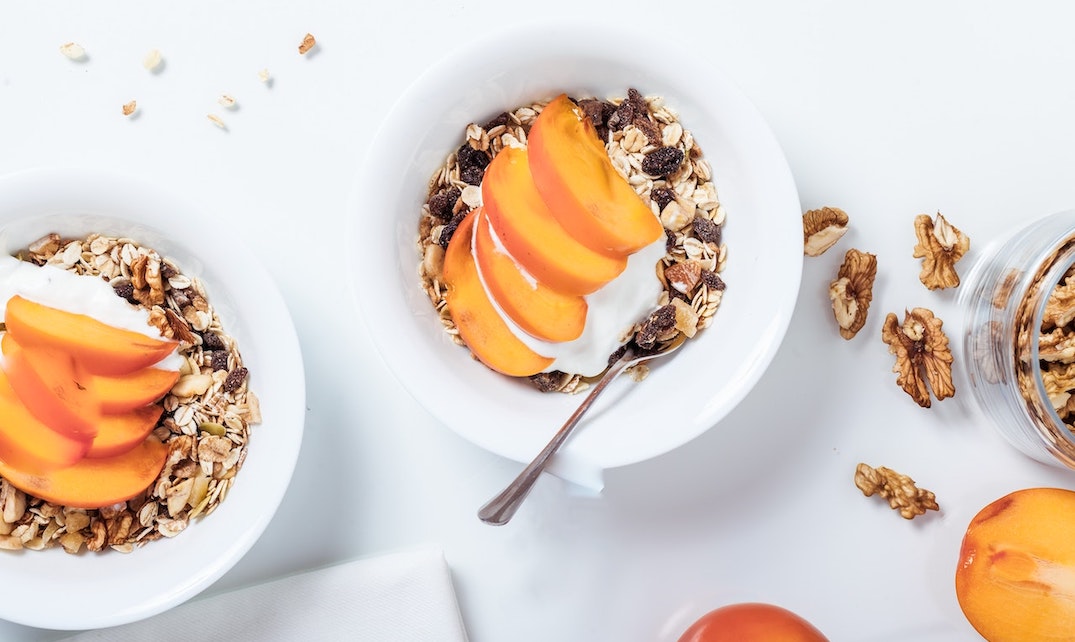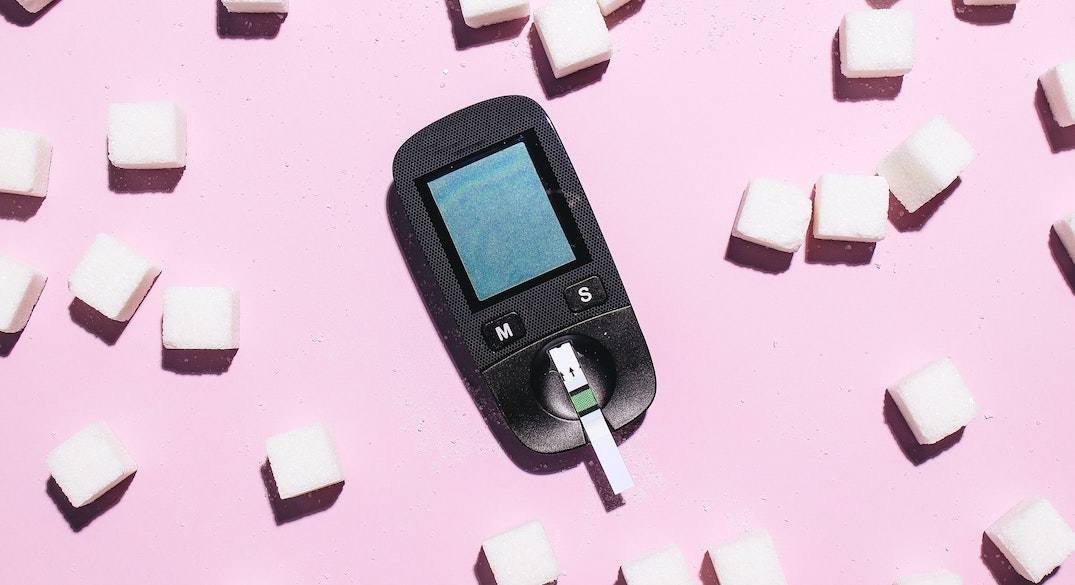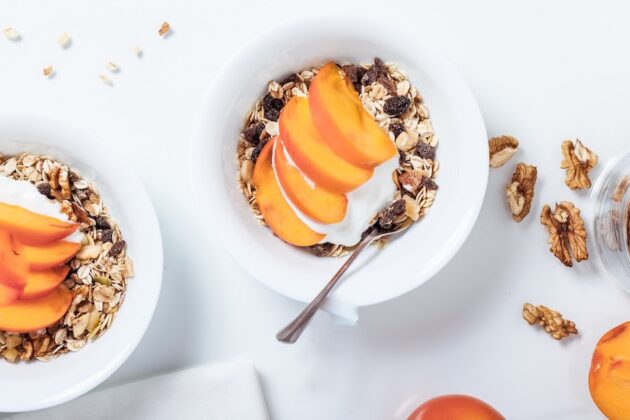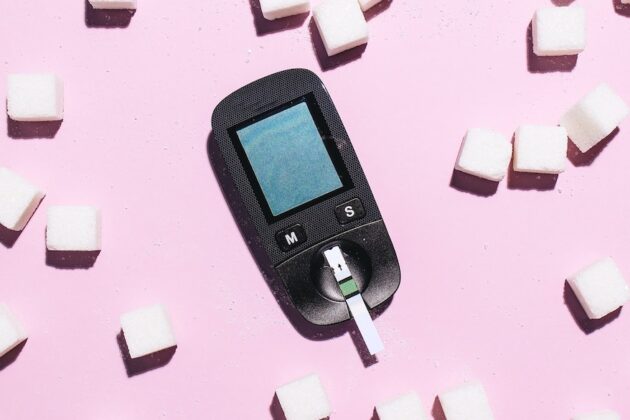20 Breakfast Ideas for Gestational Diabetes
Are you pregnant with gestational diabetes and worried about what to eat at breakfast? If so, you’re not alone!
Many soon-to-be moms struggle to make sure they’re eating safely while also enjoying their meals. Thankfully, it doesn’t have to be so hard. There is a wide variety of delicious and nutritious breakfast foods that are safe to eat with gestational diabetes.
This article goes over breakfast ideas for gestational diabetes, what foods to eat, and what to avoid.
20 breakfast ideas for gestational diabetes
When it comes to breakfast with gestational diabetes, your best option is a meal that combines protein and healthy fats for slow-release energy as well as complex carbs.
Whole-grain options like oats or brown rice over refined grains as they’ll help keep your blood sugar steady instead of spiking.
Here are some tasty breakfast ideas that are generally safe to eat with gestational diabetes:
- Greek yogurt with berries & nuts: Greek yogurt is low in carbohydrates and high in protein, making it an excellent choice for women with gestational diabetes. Berries provide natural sweetness without raising blood sugar levels, while nuts add healthy fats and additional protein.
- Scrambled eggs with spinach & avocado: Eggs are a great source of protein and healthy fats, while spinach and avocado are low in carbohydrates and high in fiber. This dish is easy to make and can be customized with different herbs and spices.
- Oatmeal with cinnamon & almonds: Oatmeal is a high-fiber, low-glycemic-index food that can help regulate blood sugar levels. Cinnamon has been shown to improve insulin sensitivity, while almonds provide healthy fats and additional protein.
- Smoothie with spinach, berries, & almond milk: Smoothies are a convenient and delicious way to get a variety of nutrients. One could include low-carbohydrate berries and spinach, along with almond milk for additional protein and healthy fats.
- Breakfast burrito with scrambled eggs, black beans, & avocado: Black beans are a low-glycemic-index food that provide fiber and protein. Combined with scrambled eggs and avocado, this breakfast burrito is a satisfying and nutritious meal.
- Low-carb pancakes made with almond flour: Almond flour is a low-carbohydrate, high-protein alternative to regular flour. These pancakes can be made with almond flour, eggs, and almond milk for a low-carbohydrate breakfast option.
- Cottage cheese with sliced peaches & nuts: Cottage cheese is a high-protein, low-carbohydrate food that can be paired with sliced peaches and nuts for a delicious and nutritious breakfast.
- Veggie omelet with mushrooms, spinach, & goat cheese: Omelets are a great way to incorporate vegetables into your breakfast. This one includes low-carbohydrate mushrooms and spinach, along with goat cheese for additional protein and healthy fats.
- Chia seed pudding with coconut milk & raspberries: Chia seeds are a low-glycemic-index food that can help regulate blood sugar levels. This pudding can be made with coconut milk and raspberries for a delicious and nutritious breakfast.
- Quinoa breakfast bowl with scrambled eggs & veggies: Quinoa is a high-protein, low-glycemic-index food that can be paired with scrambled eggs and a variety of vegetables for a nutritious and satisfying breakfast.
- Low-carb waffles made with coconut flour: Coconut flour is a low-carbohydrate, high-fiber alternative to regular flour. These waffles can be made with coconut flour, eggs, and almond milk for a low-carbohydrate breakfast option.
- Smoked salmon & cream cheese on a whole-grain bagel: Whole-grain bagels are a high-fiber, low-glycemic-index food that can be paired with smoked salmon and cream cheese for a delicious and nutritious breakfast.
- Frittata with asparagus & feta cheese: Frittatas are a great way to incorporate vegetables into your breakfast. This one includes low-carbohydrate asparagus and feta cheese for additional protein and healthy fats.
- Low-carb granola with Greek yogurt & berries: Granola can be high in carbohydrates, but this low-carb version is made with nuts, seeds, and coconut oil. It can be paired with Greek yogurt and berries for a delicious and nutritious breakfast.
- Turkey sausage with scrambled eggs & veggies: Turkey sausage is a low-fat, high-protein alternative to regular sausage. It can be paired with scrambled eggs and a variety of vegetables for a nutritious breakfast that is safe to eat with gestational diabetes.
- Low-carb muffins made with almond flour & blueberries: Almond flour is a low-carbohydrate, high-protein alternative to regular flour. These muffins can be made with almond flour, eggs, and blueberries for a low-carbohydrate breakfast option that is also high in fiber and antioxidants.
- Breakfast salad with mixed greens, boiled egg, avocado, & vinaigrette: This breakfast salad is packed with protein and healthy fats, thanks to the boiled egg and avocado. The vinaigrette is a low-carbohydrate alternative to traditional salad dressings.
- Low-carb breakfast sandwich with Canadian bacon, egg, & cheese: This breakfast sandwich uses Canadian bacon instead of regular bacon, which is lower in fat and calories. The egg and cheese provide additional protein and healthy fats.
- Tofu scramble with veggies & whole-grain toast: Tofu is a great source of vegetarian protein that can be used to make a delicious and nutritious scramble. Pair it with vegetables and whole-grain toast for a complete breakfast.
- Low-carb protein shake with whey protein powder, almond milk, & spinach: Protein shakes are another convenient and delicious way to get a variety of nutrients. This one includes low-carbohydrate almond milk and spinach, along with whey protein powder for additional protein.
It’s always a good idea to work with a nutritionist or dietitian if you have gestational diabetes. They can help you make sure you’re eating healthy and safe foods, and they can help address any issues that come up.
Here at Zaya Care, we can help you find a gestational diabetes dietitian that can help you select safe breakfast foods and develop a meal plan to properly manage your gestational diabetes.
>> Find other ideas:
- Lunch Ideas for Gestational Diabetes
- Snack Ideas for Gestational Diabetes
- Bedtime Snacks for Gestational Diabetes
- Dessert Ideas for Gestational Diabetes
How to choose healthy breakfasts when you have gestational diabetes
Here are some general tips to follow when making or ordering breakfast while you have gestational diabetes:
- Focus on protein and healthy fats – Protein and healthy fats can help balance blood sugar levels and keep you feeling full. Look for lean meats, eggs, nuts, and legumes for protein, and avocados, nuts, seeds, and fatty fish for healthy fats. Learn more about how much protein you should eat during pregnancy here.
- Monitor portion sizes – Eating too much of anything, even healthy foods, can cause blood sugar levels to rise. Keep portion sizes in check and eat smaller, frequent meals throughout the day.
- Choose whole, unprocessed foods – These foods are high in fiber, which slows glucose absorption in the bloodstream and helps manage blood sugar levels.
- Avoid sugary & refined foods – Steer clear of candy, baked goods, white bread, and other processed foods that can cause quick spikes in blood sugar levels and offer little nutritional value.
- Consult with a registered dietitian – Working with a gestational diabetes dietitian can help you create a personalized meal plan, choose healthy foods, and track your progress over time.

Healthy mom, healthy baby: Get support from a prenatal dietitian
90% of Zaya Care patients pay $0 for one-on-one counseling with a Registered Dietitan
What foods to avoid for breakfast with gestational diabetes
To manage gestational diabetes, it’s crucial to be mindful of foods that can rapidly increase blood sugar levels. Here are some types of breakfast foods to avoid or limit:
- Refined grains – White bread, white pasta, and white rice are processed and stripped of fiber and other nutrients, leading to a rapid rise in blood sugar levels. Choose whole-grain versions instead.
- Sugary drinks – Soda, fruit juice, and sweetened tea or coffee are high in calories and can cause a quick spike in blood sugar levels. Water, unsweetened tea, and black coffee are better beverage options.
- Fruits that are high in sugar – While fruits are generally healthy, some, like bananas, mangoes, and pineapples, can cause a rapid spike in blood sugar levels. Choose lower-sugar fruits like berries or apples and be mindful of portion sizes.
- Highly processed foods – These foods are often high in carbohydrates, sugar, salt, and preservatives, which can cause a quick spike in blood sugar levels. It’s best to opt for whole, unprocessed foods instead.
- Fried foods & high-fat foods – Fast foods, fatty cuts of meat, and full-fat dairy products are often high in calories and can contribute to weight gain, making it more difficult to manage blood sugar levels.
Tips for eating with gestational diabetes
Here are some other general tips for eating with gestational diabetes:
- Opt for more frequent, small meals – Eating three main meals with two to three snacks in between can help regulate blood sugar levels and prevent spikes. You should always avoid fasting during pregnancy, especially if you have gestational diabetes.
- Choose unprocessed whole foods – Whole foods are high in fiber, which can help slow down glucose absorption in the bloodstream and regulate blood sugar levels.
- Incorporate protein & healthy fats in every meal & snack – Including protein and healthy fats in your diet can help balance blood sugar levels and keep you feeling full for longer. Good sources of protein include lean meats, eggs, nuts, and legumes, while healthy fats can be found in avocados, nuts, seeds, and fatty fish.
- Be mindful of portion sizes – Consuming too much food, even if it’s healthy, can lead to high blood sugar levels. Make sure to watch your portion sizes and eat in moderation.
- Stay hydrated – Drinking enough water and other non-sugary beverages can help flush out excess sugar and maintain healthy blood sugar levels.
- Monitor your blood sugar levels regularly – Checking your blood sugar levels at home can help you understand how different foods impact your body and allow you to adjust your diet accordingly.
- Consult a registered dietitian – A prenatal dietitian can help you design a personalized meal plan that suits your individual needs and assists you in managing your blood sugar levels. They can also offer advice on healthy food choices and monitor your progress over time.
>> Find a gestational diabetes dietitian that accepts your insurance
How working with a gestational diabetes nutritionist can help
Working with a prenatal nutritionist or registered dietitian can be very helpful in managing gestational diabetes. Here are some ways a gestational diabetes nutritionist can help:
- Develop a customized meal plan – A nutritionist can help you create a personalized meal plan that takes into account your unique nutritional needs and food preferences, while also ensuring that your blood sugar levels stay within a healthy range.
- Educate you about portion sizes – A nutritionist can help you understand portion sizes and how to balance your meals to ensure that you’re getting the right amount of nutrients without causing spikes in your blood sugar levels.
- Provide education & support – A nutritionist specializing in gestational diabetes can offer education and support on healthy food choices, how to read food labels, and meal preparation. They can also provide tips on how to manage blood sugar levels during special events or holidays, empowering you to make informed decisions no matter the situation.
- Monitor progress & adjust recommendations – A nutritionist can regularly monitor your blood sugar levels and make adjustments to your meal plan as needed, providing ongoing support and motivation to help you stick to your diet.
- Address other concerns – A nutritionist can also help address other dietary concerns that may be present alongside gestational diabetes, such as food allergies or intolerances, how to incorporate vegetarian or vegan diets, and specific cultural or religious dietary restrictions. Or, maybe you feel like you’re gaining a lot of weight during your pregnancy despite not eating a lot. A nutritionist can monitor your food intake and help you figure out if you’re on track and, if not, what changes to make.
Overall, nutritionists play an important role in helping manage gestational diabetes. Here at Zaya Care, we can help you find a gestational diabetes dietitian that is covered by your insurance. Providers we work with offer online and in-person visits, so you can get the help you deserve in a way that suits your needs and lifestyle.

Healthy mom, healthy baby: Get support from a prenatal dietitian
90% of Zaya Care patients pay $0 for one-on-one counseling with a Registered Dietitan
Are you pregnant with gestational diabetes and worried about what to eat at breakfast? If so, you’re not alone!
Many soon-to-be moms struggle to make sure they’re eating safely while also enjoying their meals. Thankfully, it doesn’t have to be so hard. There is a wide variety of delicious and nutritious breakfast foods that are safe to eat with gestational diabetes.
This article goes over breakfast ideas for gestational diabetes, what foods to eat, and what to avoid.
20 breakfast ideas for gestational diabetes
When it comes to breakfast with gestational diabetes, your best option is a meal that combines protein and healthy fats for slow-release energy as well as complex carbs.
Whole-grain options like oats or brown rice over refined grains as they’ll help keep your blood sugar steady instead of spiking.
Here are some tasty breakfast ideas that are generally safe to eat with gestational diabetes:
- Greek yogurt with berries & nuts: Greek yogurt is low in carbohydrates and high in protein, making it an excellent choice for women with gestational diabetes. Berries provide natural sweetness without raising blood sugar levels, while nuts add healthy fats and additional protein.
- Scrambled eggs with spinach & avocado: Eggs are a great source of protein and healthy fats, while spinach and avocado are low in carbohydrates and high in fiber. This dish is easy to make and can be customized with different herbs and spices.
- Oatmeal with cinnamon & almonds: Oatmeal is a high-fiber, low-glycemic-index food that can help regulate blood sugar levels. Cinnamon has been shown to improve insulin sensitivity, while almonds provide healthy fats and additional protein.
- Smoothie with spinach, berries, & almond milk: Smoothies are a convenient and delicious way to get a variety of nutrients. One could include low-carbohydrate berries and spinach, along with almond milk for additional protein and healthy fats.
- Breakfast burrito with scrambled eggs, black beans, & avocado: Black beans are a low-glycemic-index food that provide fiber and protein. Combined with scrambled eggs and avocado, this breakfast burrito is a satisfying and nutritious meal.
- Low-carb pancakes made with almond flour: Almond flour is a low-carbohydrate, high-protein alternative to regular flour. These pancakes can be made with almond flour, eggs, and almond milk for a low-carbohydrate breakfast option.
- Cottage cheese with sliced peaches & nuts: Cottage cheese is a high-protein, low-carbohydrate food that can be paired with sliced peaches and nuts for a delicious and nutritious breakfast.
- Veggie omelet with mushrooms, spinach, & goat cheese: Omelets are a great way to incorporate vegetables into your breakfast. This one includes low-carbohydrate mushrooms and spinach, along with goat cheese for additional protein and healthy fats.
- Chia seed pudding with coconut milk & raspberries: Chia seeds are a low-glycemic-index food that can help regulate blood sugar levels. This pudding can be made with coconut milk and raspberries for a delicious and nutritious breakfast.
- Quinoa breakfast bowl with scrambled eggs & veggies: Quinoa is a high-protein, low-glycemic-index food that can be paired with scrambled eggs and a variety of vegetables for a nutritious and satisfying breakfast.
- Low-carb waffles made with coconut flour: Coconut flour is a low-carbohydrate, high-fiber alternative to regular flour. These waffles can be made with coconut flour, eggs, and almond milk for a low-carbohydrate breakfast option.
- Smoked salmon & cream cheese on a whole-grain bagel: Whole-grain bagels are a high-fiber, low-glycemic-index food that can be paired with smoked salmon and cream cheese for a delicious and nutritious breakfast.
- Frittata with asparagus & feta cheese: Frittatas are a great way to incorporate vegetables into your breakfast. This one includes low-carbohydrate asparagus and feta cheese for additional protein and healthy fats.
- Low-carb granola with Greek yogurt & berries: Granola can be high in carbohydrates, but this low-carb version is made with nuts, seeds, and coconut oil. It can be paired with Greek yogurt and berries for a delicious and nutritious breakfast.
- Turkey sausage with scrambled eggs & veggies: Turkey sausage is a low-fat, high-protein alternative to regular sausage. It can be paired with scrambled eggs and a variety of vegetables for a nutritious breakfast that is safe to eat with gestational diabetes.
- Low-carb muffins made with almond flour & blueberries: Almond flour is a low-carbohydrate, high-protein alternative to regular flour. These muffins can be made with almond flour, eggs, and blueberries for a low-carbohydrate breakfast option that is also high in fiber and antioxidants.
- Breakfast salad with mixed greens, boiled egg, avocado, & vinaigrette: This breakfast salad is packed with protein and healthy fats, thanks to the boiled egg and avocado. The vinaigrette is a low-carbohydrate alternative to traditional salad dressings.
- Low-carb breakfast sandwich with Canadian bacon, egg, & cheese: This breakfast sandwich uses Canadian bacon instead of regular bacon, which is lower in fat and calories. The egg and cheese provide additional protein and healthy fats.
- Tofu scramble with veggies & whole-grain toast: Tofu is a great source of vegetarian protein that can be used to make a delicious and nutritious scramble. Pair it with vegetables and whole-grain toast for a complete breakfast.
- Low-carb protein shake with whey protein powder, almond milk, & spinach: Protein shakes are another convenient and delicious way to get a variety of nutrients. This one includes low-carbohydrate almond milk and spinach, along with whey protein powder for additional protein.
It’s always a good idea to work with a nutritionist or dietitian if you have gestational diabetes. They can help you make sure you’re eating healthy and safe foods, and they can help address any issues that come up.
Here at Zaya Care, we can help you find a gestational diabetes dietitian that can help you select safe breakfast foods and develop a meal plan to properly manage your gestational diabetes.
>> Find other ideas:
- Lunch Ideas for Gestational Diabetes
- Snack Ideas for Gestational Diabetes
- Bedtime Snacks for Gestational Diabetes
- Dessert Ideas for Gestational Diabetes
How to choose healthy breakfasts when you have gestational diabetes
Here are some general tips to follow when making or ordering breakfast while you have gestational diabetes:
- Focus on protein and healthy fats – Protein and healthy fats can help balance blood sugar levels and keep you feeling full. Look for lean meats, eggs, nuts, and legumes for protein, and avocados, nuts, seeds, and fatty fish for healthy fats. Learn more about how much protein you should eat during pregnancy here.
- Monitor portion sizes – Eating too much of anything, even healthy foods, can cause blood sugar levels to rise. Keep portion sizes in check and eat smaller, frequent meals throughout the day.
- Choose whole, unprocessed foods – These foods are high in fiber, which slows glucose absorption in the bloodstream and helps manage blood sugar levels.
- Avoid sugary & refined foods – Steer clear of candy, baked goods, white bread, and other processed foods that can cause quick spikes in blood sugar levels and offer little nutritional value.
- Consult with a registered dietitian – Working with a gestational diabetes dietitian can help you create a personalized meal plan, choose healthy foods, and track your progress over time.

Healthy mom, healthy baby: Get support from a prenatal dietitian
90% of Zaya Care patients pay $0 for one-on-one counseling with a Registered Dietitan
What foods to avoid for breakfast with gestational diabetes
To manage gestational diabetes, it’s crucial to be mindful of foods that can rapidly increase blood sugar levels. Here are some types of breakfast foods to avoid or limit:
- Refined grains – White bread, white pasta, and white rice are processed and stripped of fiber and other nutrients, leading to a rapid rise in blood sugar levels. Choose whole-grain versions instead.
- Sugary drinks – Soda, fruit juice, and sweetened tea or coffee are high in calories and can cause a quick spike in blood sugar levels. Water, unsweetened tea, and black coffee are better beverage options.
- Fruits that are high in sugar – While fruits are generally healthy, some, like bananas, mangoes, and pineapples, can cause a rapid spike in blood sugar levels. Choose lower-sugar fruits like berries or apples and be mindful of portion sizes.
- Highly processed foods – These foods are often high in carbohydrates, sugar, salt, and preservatives, which can cause a quick spike in blood sugar levels. It’s best to opt for whole, unprocessed foods instead.
- Fried foods & high-fat foods – Fast foods, fatty cuts of meat, and full-fat dairy products are often high in calories and can contribute to weight gain, making it more difficult to manage blood sugar levels.
Tips for eating with gestational diabetes
Here are some other general tips for eating with gestational diabetes:
- Opt for more frequent, small meals – Eating three main meals with two to three snacks in between can help regulate blood sugar levels and prevent spikes. You should always avoid fasting during pregnancy, especially if you have gestational diabetes.
- Choose unprocessed whole foods – Whole foods are high in fiber, which can help slow down glucose absorption in the bloodstream and regulate blood sugar levels.
- Incorporate protein & healthy fats in every meal & snack – Including protein and healthy fats in your diet can help balance blood sugar levels and keep you feeling full for longer. Good sources of protein include lean meats, eggs, nuts, and legumes, while healthy fats can be found in avocados, nuts, seeds, and fatty fish.
- Be mindful of portion sizes – Consuming too much food, even if it’s healthy, can lead to high blood sugar levels. Make sure to watch your portion sizes and eat in moderation.
- Stay hydrated – Drinking enough water and other non-sugary beverages can help flush out excess sugar and maintain healthy blood sugar levels.
- Monitor your blood sugar levels regularly – Checking your blood sugar levels at home can help you understand how different foods impact your body and allow you to adjust your diet accordingly.
- Consult a registered dietitian – A prenatal dietitian can help you design a personalized meal plan that suits your individual needs and assists you in managing your blood sugar levels. They can also offer advice on healthy food choices and monitor your progress over time.
>> Find a gestational diabetes dietitian that accepts your insurance
How working with a gestational diabetes nutritionist can help
Working with a prenatal nutritionist or registered dietitian can be very helpful in managing gestational diabetes. Here are some ways a gestational diabetes nutritionist can help:
- Develop a customized meal plan – A nutritionist can help you create a personalized meal plan that takes into account your unique nutritional needs and food preferences, while also ensuring that your blood sugar levels stay within a healthy range.
- Educate you about portion sizes – A nutritionist can help you understand portion sizes and how to balance your meals to ensure that you’re getting the right amount of nutrients without causing spikes in your blood sugar levels.
- Provide education & support – A nutritionist specializing in gestational diabetes can offer education and support on healthy food choices, how to read food labels, and meal preparation. They can also provide tips on how to manage blood sugar levels during special events or holidays, empowering you to make informed decisions no matter the situation.
- Monitor progress & adjust recommendations – A nutritionist can regularly monitor your blood sugar levels and make adjustments to your meal plan as needed, providing ongoing support and motivation to help you stick to your diet.
- Address other concerns – A nutritionist can also help address other dietary concerns that may be present alongside gestational diabetes, such as food allergies or intolerances, how to incorporate vegetarian or vegan diets, and specific cultural or religious dietary restrictions. Or, maybe you feel like you’re gaining a lot of weight during your pregnancy despite not eating a lot. A nutritionist can monitor your food intake and help you figure out if you’re on track and, if not, what changes to make.
Overall, nutritionists play an important role in helping manage gestational diabetes. Here at Zaya Care, we can help you find a gestational diabetes dietitian that is covered by your insurance. Providers we work with offer online and in-person visits, so you can get the help you deserve in a way that suits your needs and lifestyle.

Healthy mom, healthy baby: Get support from a prenatal dietitian
90% of Zaya Care patients pay $0 for one-on-one counseling with a Registered Dietitan





